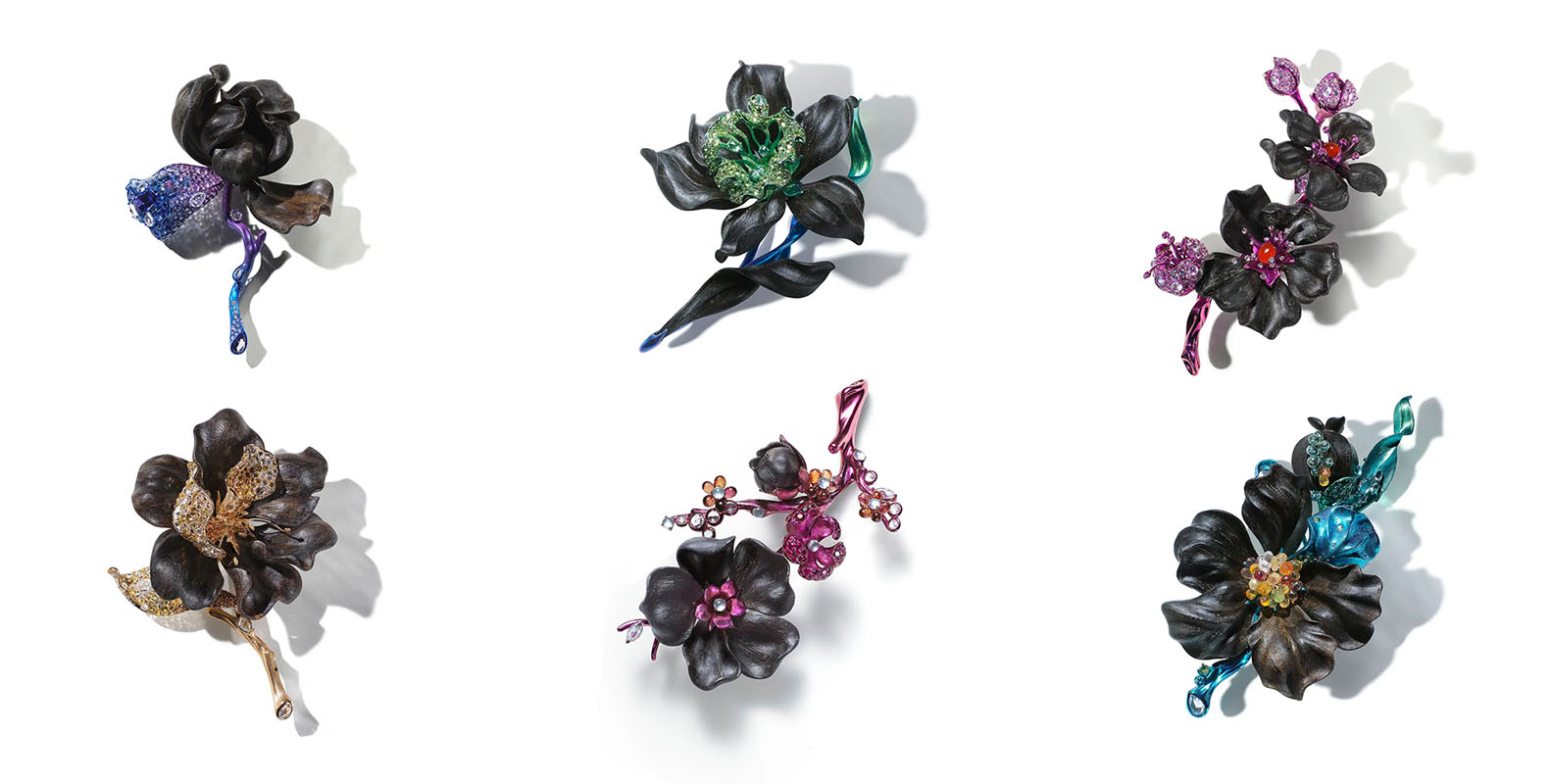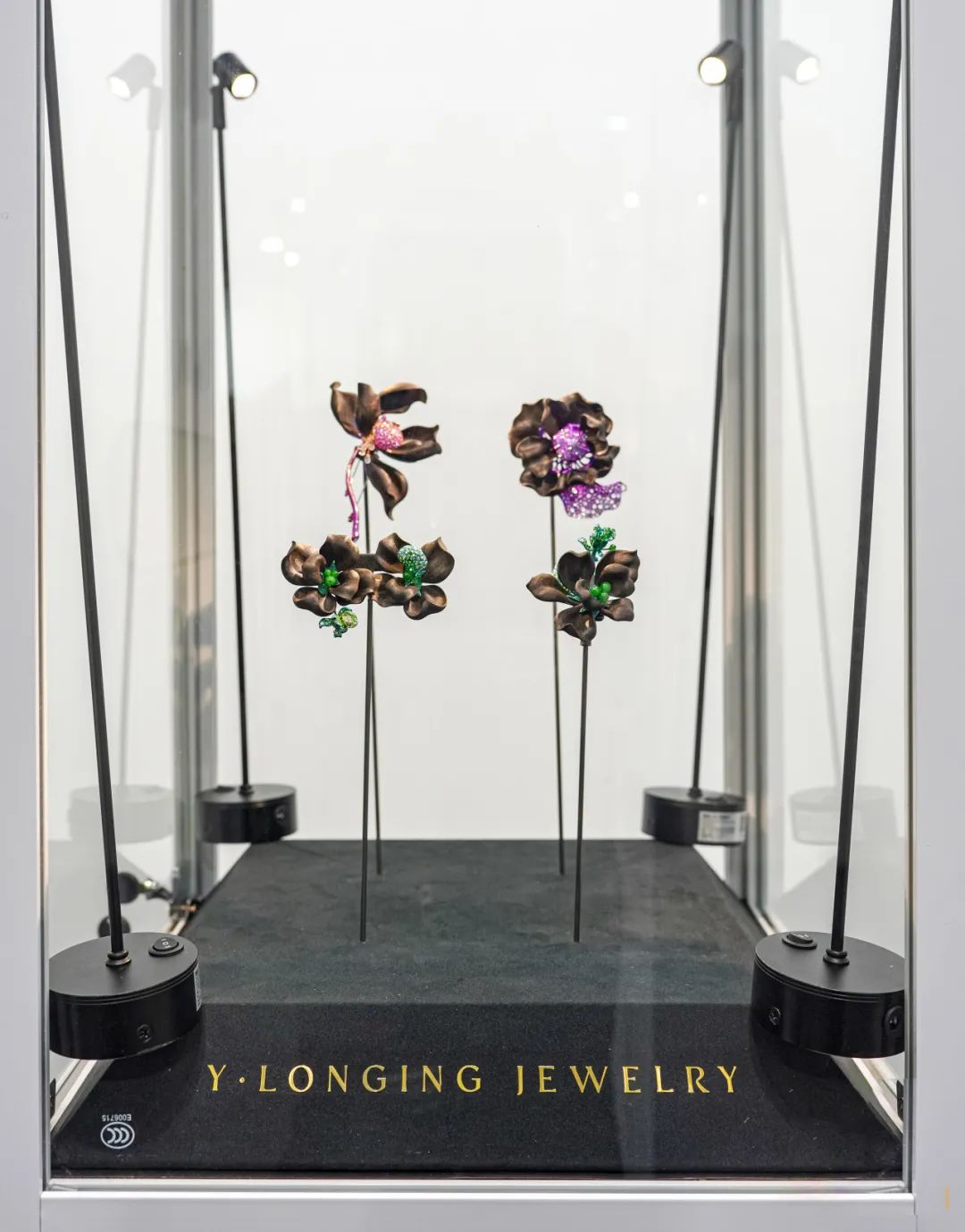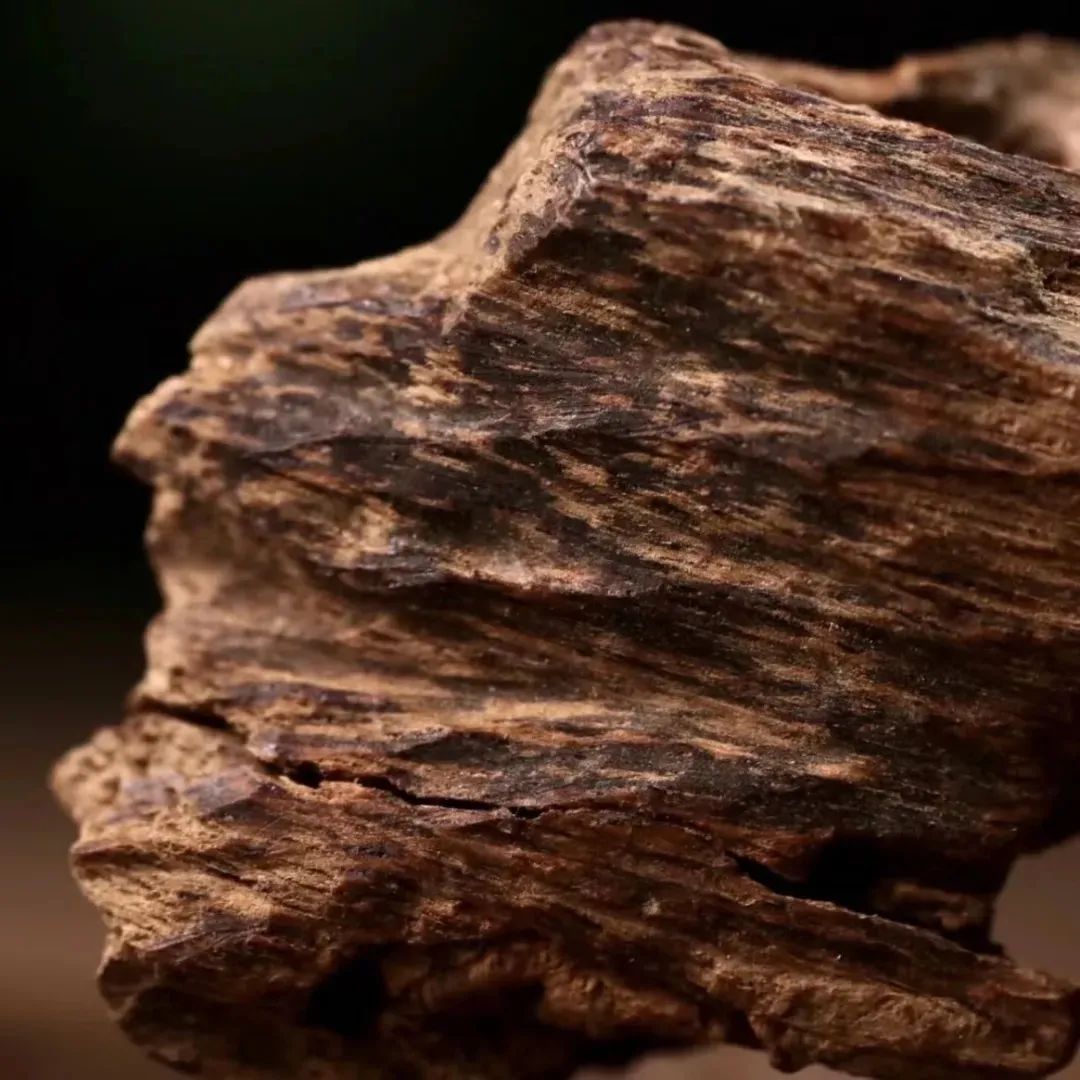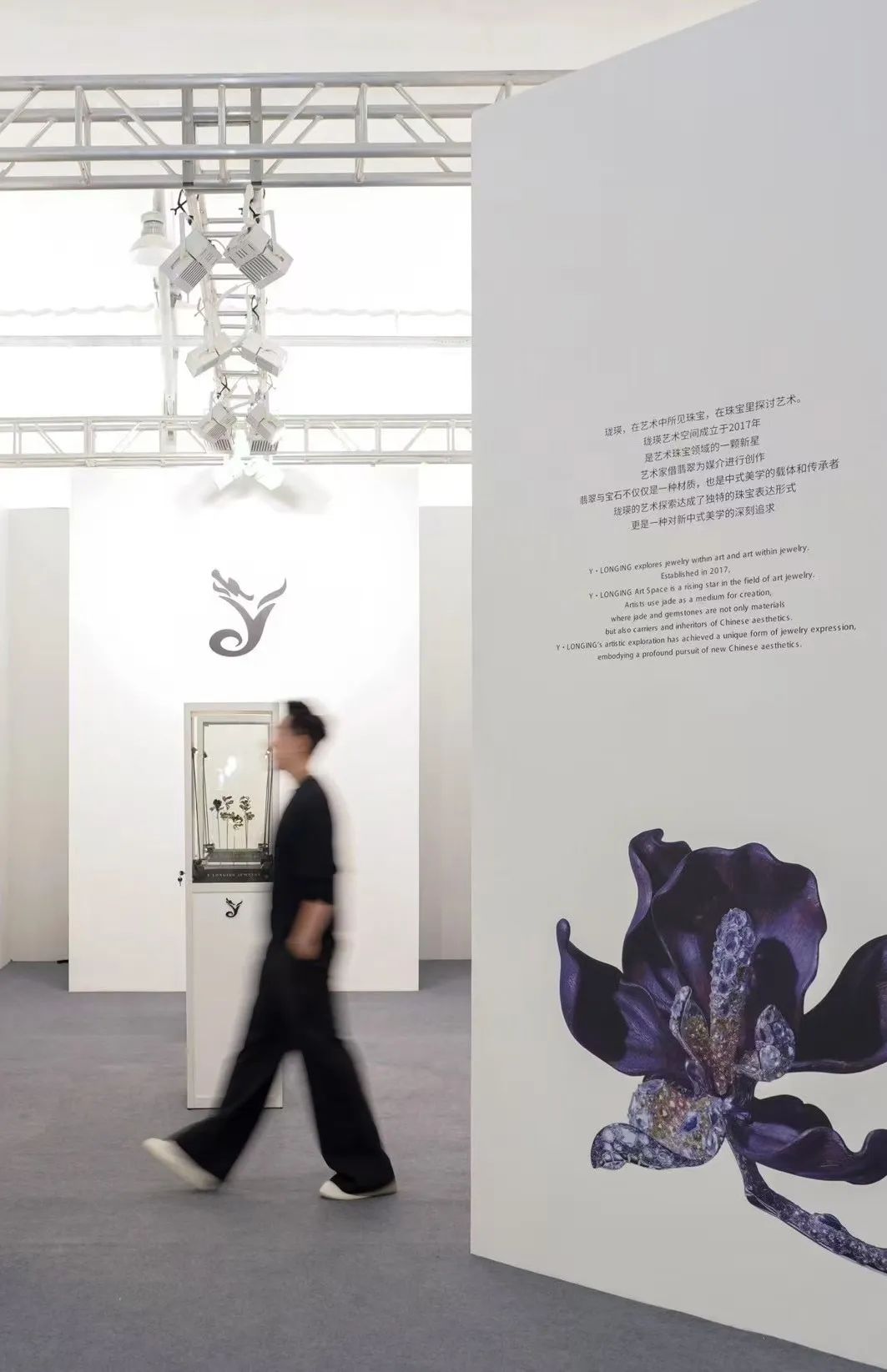
A jewelry collection titled ”Song Elegance Incense“ has captivated collectors worldwide across ART021 Hong Kong & Shanghai and West Bund Art & Design this year. The groundbreaking fusion of agarwood with traditional gemstones manifests in twelve pieces that capture fleeting floral silhouettes, refracting the refined elegance inherited from the Song Dynasty. As a microcosm, “Song Elegance Incense” reveals how traditional Eastern aesthetics subtly influence young contemporary artists. Oui Art spotlights the creator behind this series: Wei Yang, a post-90s jewelry artist.
Eastern Craftsmanship: Unlocking the Song Aesthetic
Wei Yang, graduating from the China Academy of Art(CAA), roots his practice in institutional art training, with Eastern aesthetics as his core inspiration, yielding works of archaic sophistication.
His twelve-piece “Song Elegance Incense” series—“Graceful Orchid”, “Delicate Snow Blossoms”,“Jade Rain of Immortal Isles”, “Summer Peony”, “Pomegranate Moon”, “Crimson Lotus Whispers”, “Emerald Crabapple”, “Purple Glory Hall”, “Autumn Everlasting”, “Orchid Fields”, “Pure Camellia”, and “Moonlit Waves”—intertwines Song-era elegance with China's traditional "Twelve Floral Months," embedding seasonal transitions into the daily rituals of incense appreciation and flower viewing.
Pushing material and sensory boundaries, Wei proposes a "Five-Sense Jewelry" concept. By centering agarwood and complementing it with gemstone inlays, he imbues each piece with traceable fragrance, liberating jewelry beauty from visual-tactile constraints and resurrecting it through olfaction.
Dialogue with Wei Yang: Reimagining Aesthetics

Your works exude Song Dynasty influences. Did jewelry as a medium or Eastern aesthetics come first?

Eastern aesthetics unquestionably came first. Having lived long in Hangzhou—the Southern Song capital—I’m steeped in its cultural legacy. Chinese aesthetics peaked during the Song Dynasty. Their nuanced appreciation of tea, flowers, and incense deeply moves me. I chose agarwood to olfactorily convey Eastern beauty, paying homage to floral and incense arts. After creating the series’ inaugural bloom, I envisioned the twelve floral deities representing birth months, culminating in the Twelve Floral Months collection.

What was your academic focus? Why jewelry?

I studied animation at CAA but gravitated toward handicrafts, beginning with silverwork before transitioning to fine jewelry. While conventional "Chinese-style" jewelry extends heritage techniques like cloisonné or kingfisher feather art, my "neo-Chinese" approach isn’t about pastiche—it’s innovative evolution rooted in beauty’s ultimate expression.

Elegance in the Song Dynasty shaped Chinese culture profoundly, embodying visual subtlety and spiritual serenity. What’s your deepest resonance with it?

Indifference. Only by mentally releasing external attachments can one withstand life’s turbulence and reach a pure "utopia." Paradoxically, when I truly let go, everything converges. For example, I reserve my final day in Beijing for the Forbidden City, aimlessly strolling its central axis. This habit was carried out without any specific purpose, but during the process, the ideas in my mind gradually took shape. I drew inspiration from the five Chinese-style pavilions at the elevated central axis points, designed five rings, and eventually completed the "Central Axis" series of works.

Are you the first to use agarwood in fine jewelry?

I’m not the pioneer of wooden jewelry, but I am the first to adopt agarwood. A Western century-old brand once carved a rose from rosewood, but it lacked petal-like softness. Under magnification, agarwood’s texture resembles pores—I can almost see petals "breathing," revealing its artistry.

This aligns with your "Five-Sense Jewelry." When I saw this concept, the first thing that came to my mind was the tradition of Shanghai people wearing gardenias. However, the fragrance of gardenias has a limited duration. Does your "scented essence" also have a time limit?

Currently, I’ve achieved three senses: sight, touch, and smell. When I proposed this, no one else was doing it—it’s like the jewelry industry’s "industrial revolution."
Just as you mentioned, the gardenia flower represents a kind of inherent sense of ceremony. To some extent, my creation of "Five-Sense Jewelry" was also driven by a sense of ceremony. The fragrance of agarwood is long-lasting. I wanted to showcase the vitality of the inherent aroma of jewelry through another medium. I also hope that when I eventually connect the other "Four-Sense Jewelry" and " Five-Sense Jewelry", agarwood can still be presented as a representative element.

Any technical challenges with agarwood?

My first floral piece took 6–8 months. It was full of difficulties. Making a whole block of wood present a soft texture like a flower petal was extremely challenging. We could only spend more time polishing. It took three days to carve out one petal, and then I would select one from the five petals to actually use in the work. A complete flower usually requires five petals, so carving was the most difficult part of the entire process.

Is agarwood as collectible as gemstones?

In my opinion, precious gemstones must possess three characteristics: durability, beauty, and uniqueness. These three points are exactly met by agarwood. From another perspective, I believe that high-end jewelry is all delicate and requires meticulous care during the collection process.

Five years ago, you were the "Coin Prince." What prompted the shift to fine jewelry?

Coins are carriers with a strong Western flavor. However, during the design process, I attempted to integrate them with Eastern culture. This is reflected in the work as a "conflict" sensation. It is precisely this style that enables me to be "seen" by more people during the "Ancient Coin Era". In the creative process, I did not have a clear boundary for the materials. It was simply a continuous pursuit of ideal media that could carry aesthetics. What remained unchanged was the pursuit of the ultimate quality of the work. During this process, naturally, I moved towards higher-grade jewelry.

In this year's three exhibitions, how did the collectors or visitors respond to your works?

Regarding the change in the material of the jewelry, they first felt a sense of novelty, and then empathized with the "flowers bloom around the wood". I could read these feelings in their expressions because no one had ever done such a thing before.
At this exhibition on the West Bund Art & Design, there was a foreign collector. When he saw the series of “Song Elegance Incense", he asked me what material it was made of. I said it was agarwood from the East. He was very interested. I could sense that this was something very culturally rich and attractive to the West. At that moment, I felt a sense of national pride. This feeling came from using an Eastern material to create jewelry that could showcase Eastern culture.

Who’s your ideal collector?

Those with scholar-official refinement—a temperament transcending materialism, cultivated by arts and culture.

Apart from traditional Eastern aesthetics, does contemporary art have an impact on your creative work as well?

Yes. One of the major characteristics of contemporary art is its freedom. It is not limited by materials and can express anything; nor is it limited by form, as it can express only on a spiritual level. Therefore, we can say that "everyone is an artist", but it is not limited to "art" itself; rather, it is more about expressing the philosophical spirit within it. When a work fails to resonate with the soul of the viewer, then I do not consider it art; it is merely a contemporary creation. The same applies to jewelry.

In the field of jewelry art, there are works like “Stilled Life” by master sculptor Wallace Chan,and Cindy Chao's “Butterfly Love" which has gained much attention in recent years... and other works by different styles by jewelry artists such as Feng J and Anna Hu. So, what is your creative goal?

I'm not sure if I can match them, but creativity should be diverse. Everyone's way of expression is different. For example, the element of "flower", each person's understanding and inspiration for "flower" are different. Some might focus on expressing the "flower" in nature, some might be about "flower" in images, while my "flower" is based on works from the Song Dynasty. What's worth learning is that I noticed Cindy Chao's annual butterflies. Each year they become more and more vibrant. This must be due to the artist's continuous improvement in artistic quality, which also constantly prompts me to create better works.

Tell us about your “Jadeite Fan.”

At that time, I visited an "intangible cultural heritage" paper-cutting master in Shaanxi. During the learning process of paper-cutting, the teacher told me that people should be like water - they don't need to worry too much about making sharp turns, as long as they continue to flow along the small river of life, eventually they will find a way out. I used this experience to make an emerald fan, with the patterns on it being traditional scroll patterns. This kind of pattern is widely used in the Forbidden City or ancient sites, symbolizing continuous life and bloodline succession. I hope that whether it is art or "intangible cultural heritage", it should continue to be passed down like water.

As both artist and Y·LONGING JEWELRY co-founder, how do you balance the roles?

Independent artists can be more free, but if one is the founder of a brand, they need to consider the development plan of the brand more. However, whether it's a brand or an artist, they must have stylized and series-based works; otherwise, the overall presentation will be chaotic. I think these two are not contradictory; instead, they can move forward together.






